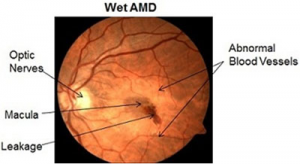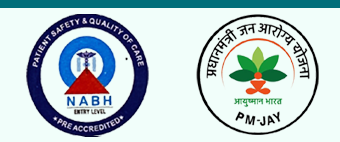The common disease affecting the retina are:-
- Diabetic Retinopathy
- Retinal Detachment
- Age-related Macular Degeneration (ARMD)
Diabetic Retinopathy
Diabetic Retinopathy (DR) is a common vascular retina disease affecting about 40% of type 1 diabetics & 20% of type 2 diabetics. Duration of the diabetes is the most important risk factor for DR.
Diabetes interferes with the body’s ability to use and store sugar (glucose). The disease is characterized by too much sugar in the blood, which can cause damage throughout the body, including the eyes.
Over time, diabetes damages small blood vessels throughout the body, including the retina. Diabetic retinopathy occurs when these tiny blood vessels leak blood and other fluids. This causes the retinal tissue to swell, resulting in cloudy or blurred vision. The condition usually affects both eyes. The longer a person has diabetes, the more likely they will develop diabetic retinopathy. If left untreated, diabetic retinopathy can cause blindness.
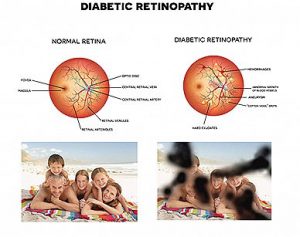
Retinal Detachment
Retinal detachment (RD) is a disorder of the eye in which the retina peels away from its underlying layer of support tissue and can lead to sudden vision loss and blindness. It is a eye emergency. RD can occur due to a hole, tear, or break in the retina or inflammation and trauma.
Surgery is the only treatment for RD and it has to be done as early as possible for good results. Delaying the surgery can lead to permanent damage of retina and lead to complete blindness. At Eyenova hospital, we perform advanced retinal surgeries with 25 Gauge Micro Incision Vitrectomy Surgery (MIVS) instruments and System to achieve good postoperative results in patients.
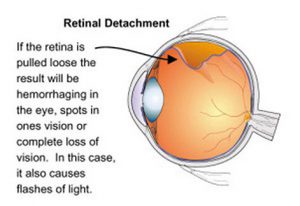
Age related Macular Degeneration (ARMD)
Age-related macular degeneration (ARMD) is the most common cause of irreversible vision loss in people over age of 60 years.
The retina has two parts: The peripheral retina and central part called macula. The macula is the only part of the retina capable of producing a sharp and crisp image, which enables us to read, write, watch television and drive. There are two main types of macular degeneration, “dry” and “wet”.
Normal Vision

Macular Vision

Macular Vision
Objects are obstructed and unclear
Dry age-related Macular Degeneration /Dry ARMD
This is the most common type of age-related macular degeneration. The round deposits called drusen (degenerated material) appear beneath the retina. A few small drusen cause no decrease in vision. However, if any large drusen develop, vision may be decreased. The dry type of macular degeneration presents with a slow, progressive loss of vision. In this type, the vision remains stable and good for a longer period of time. Unfortunately, there is no treatment for dry age-related macular degeneration.
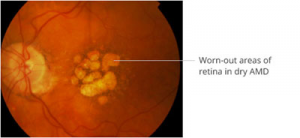
Wet age-related Macular Degeneration /Wet ARMD Wet
In this type, abnormal blood vessels grow beneath the macula, they leak and bleed. The “wet” form of macular degeneration can cause more severe visual loss. Vision may suddenly become distorted or blurred
